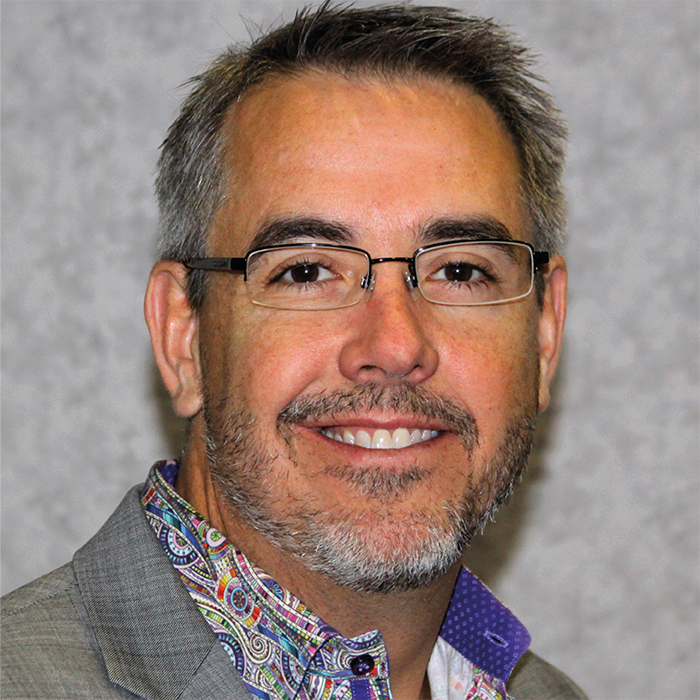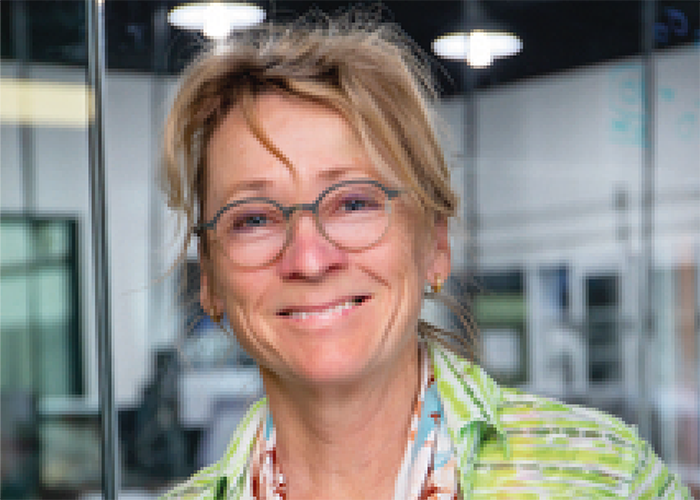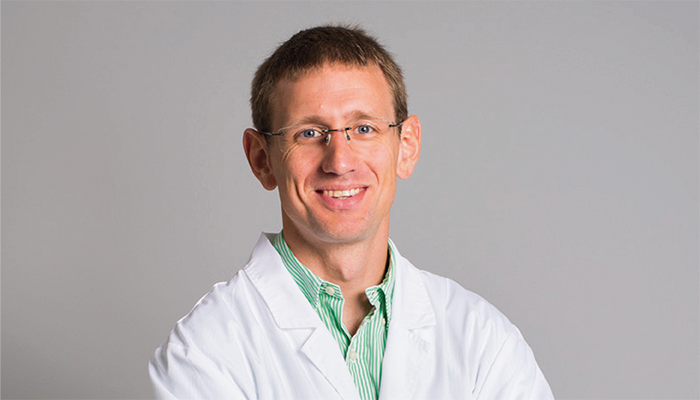There’s no doubt that the expertise and proficiency of cannabis testing laboratories have evolved over the past decade – with today’s labs continuing to improve. In sharing improved methods across the industry, major instrument providers have put manpower behind method development as a means to jockey for lucrative business opportunities. We’ve also seen nonprofit professional quality and analysis-focused organizations engaging with the cannabis industry in an effort to standardize methods and improve quality. However, despite these advances, cannabis analysis remains laborious and expensive to conduct.
Here, we speak to Wes Burk, Cindy Orser, and Markus Roggen about the challenges within cannabis analysis – and how to drive progress in the coming years.
Wes Burk is President and CEO of Emerald Scientific, San Luis Obisop, USA. In 2014, his business partner contemplated opening a cannabis testing lab with the momentum of legalization across the US. Despite approaching various challenges in accessing quality scientific instruments and scaling lab operations, they developed a solution in distribution with a sole focus on cannabis testing labs. Wes believes in the potential of cannabis to improve the health of humans and the planet – hoping that, with further research, we could see an evolution in cannabis quality that will solve unmet needs across the world.
Cindy Orser, PhD is Chief Scientific Officer at Apothecare, Boulder, Colorado, USA, who was headhunted by Digipath Labs to build a cannabis testing lab in Las Vegas in 2014, and again in San Diego in 2020. This project was incredibly challenging due to a lack of published analytical methods for working with cannabis flower and extracts and very few instrument providers willing to sell within the cannabis industry. After becoming engaged in cannabis testing, Cindy continued to work with cannabinoid content as Digipath progressed to terpenoid content strain classification in collaboration with Philip Henry of VSSL to further this research.
Markus Roggen is Founder, President, and Chief Scientific Officer at Controlled Chemistry, Vancouver, Canada – the rebirth of Delic Labs/Complex Biotech Discovery. After completing his PhD and Postdoc in organic chemistry, Markus found himself moving towards the cannabis industry in 2014. Since then, he’s held executive positions in different analytical and production companies, working in cannabis product safety, production, and consumption practices. His work has been recognized with a number of awards, including the ElSohly Award from the American Chemical Society’s Cannabis Chemistry Subdivision.

Wes Burk

Cindy Orser

Markus Roggen
What are the biggest challenges in cannabis analysis?
Burk: Today’s challenge is not a lack of skill but rather the unethical behavior driven by a model in which our commodity is valued by the content of one analyte: THC. Falsified analysis certificates and “dry labbing” are common examples that are threatening the health and safety of customers – and by extension our entire industry. I believe this is an emergency for our industry, with ramifications for all cannabis verticals.
In addition, the complex and diverse regulations due to the lack of a federal framework have created some specific challenges on the pesticides front. The level of detection requirements for some of these analytes combined with finding the right standards for each state’s requirements presents a challenge. However, there are efforts underway to improve access to the right reference standards for each regulatory framework.
Roggen: Yes, cannabis analysis is currently performed to allow the product to be sold successfully. It must be free of pesticides, heavy metals, and so forth with a THC percentage that satisfies the producer – who is also the customer of the analytical lab. The end consumer is not involved in this process and as such, analysis doesn’t reflect their wants and needs. Because of these poor incentives, research and testing of aroma compounds is lacking. Additionally, due to regulations, we test how much THC is in the product but not how much is taken up by the consumer. Does an infused pre-roll actually deliver more THC per puff than a standard pre-roll?
Orser: There are plenty of expenses associated with running an ISO-17025 accredited lab under the restriction of ever-changing state regulations in the US and reporting within an environment rampant with illicit black-market cannabis dealing. Additionally, the pressure from the hemp extraction business operating under the imperfectly worded USDA Farm Bill allows them unrestricted benefits on interstate transport, banking, and business deductions – a luxury that cannabis labs are not privy to.
How can the cannabis analysis field overcome the challenges it faces?
Orser: As Wes and Markus allude to, there are several areas where we can improve. Firstly, sample processing could be automated, but it’s an onerous undertaking with the hundreds of product types on the market. Additionally, sampling methods need to be improved and standardized. For example, if a cultivator is doing the sampling, one sample is pulled for contaminants and another is pulled for cannabinoids, that does not make sense. Most cannabis-complicit states have labs conducting the testing – it’s clear that a standardized process is missing.
In regards to legalization, states should allow the use of handheld Fourier transform near-infrared spectroscopy (FT-NIR) for cannabinoid analysis and implement spot testing from samples pulled at dispensaries. With more freedom in analysis, labs will be able to improve QC across the cannabis field.
I would also like to see heavy metal and mycotoxin testing conducted at random rather than on every sample. This is because failure rates are so low that the expense isn’t warranted.
Perhaps QC issues could be solved by implementing AI in better testing schemes. With more research, I hope we can use technological advancements to ensure consistency across cannabis analysis.
Are there any emerging or underutilized analytical techniques that could make a big difference in the cannabis field?
Roggen: There are three in particular that come to mind. Firstly, on-site analytics with optical tools, such as FT-IR, for reaction progress tracking on the production floor. This cuts waste and would be a great addition to production sites. UV-Vis is also a great tool for quality control (QC) – ensuring consistent appearance and concentration for drinks and tinctures.
Another underused tool is use-focused analytics. The compounds and concentrations in an inhalable product (like a pre-roll or a vape cartridge) are different to the compounds and concentrations in the aerosol inhaled. Amber Wise performed great research into heavy metals in aerosols from vape cartridges. And my team published on how much THC is inhaled from different pre-rolls (1).
Finally, we should be using metabolomics to learn what else is in cannabis. Ian Oswald and his team at Abstrax have identified thiols and skatole as important drivers of aroma. If the industry touts the importance of the entourage effect, we should put added effort into discovering what these compounds are.
How can we work towards more standardization in cannabis quality control?
Orser: There’s plenty of helpful discussion, but it's so painfully slow and dogmatic. Volunteers are running nonprofit watchdogs on quality (progress is slow and steady). NIST, ASTM, AOAC, and ACS are all involved in standardization of methods for uniform testing, but this doesn’t solve issues of dirty labs surviving by meeting/exceeding the expectations of clients for specific THC percentages. We can formulate standard methods to ensure QC, but how do we enforce it when some players do not care about quality or standards?
Roggen: I agree. The answer: make cannabis QC federally legal and have the FDA dictate how to test it, with the enforcement potential needed to ensure its application. Canada has legalized cannabis, but Health Canada does not dictate or control how testing is performed.
Burk: Unfortunately, the cannabis industry is still nascent compared to other industries, such as food safety. The lack of federal oversight really complicates the development of standards because of the nuances of each state’s requirements. However, organizations such as ASTM, ACS, and AOAC are all making great strides in the development and standardized methods. Hopefully we will see standardization take hold in the near future.
What do you think is preventing analytical scientists and wider society from fully embracing cannabis?
Roggen: In the US, to put it simply: federal jail and a chaotic industry environment.
Orser: Markus is right – state-based drug-type THC cannabis will never be fully embraced until the disconnect between state-level medical marijuana, retail cannabis programs, and federal prohibition can be resolved.
Burk: I suspect that the challenging economic environment for cannabis labs and the wider cannabis industry has dampened the interest of quality analytical scientists. The cannabis industry is young, volatile, challenging from a regulatory standpoint, and unfortunately wrought with unethical competitors. We desperately need to solve potency inflation and other negative behaviors in cannabis before we can truly build a solid industry. Working on these issues will attract the greatest talent and help us overcome the stigmatization of cannabis overall – not just in analytical science.
Any tips and tricks for analytical scientists entering the cannabis industry?
Roggen: All cannabis labs are start-ups due to the early nature of the industry. It takes a certain mindset to deal with the uncertainty and risk involved. If you’re interested in start-up life and want to work in an underdeveloped field of research, cannabis could be right for you!
Burk: Start with methods that have been developed by trusted organizations, such as ASTM, ACS, and AOAC. They are likely to be in the mix when federal oversight finally arrives. Also, find a supplier that is devoted to cannabis, truly understands the needs of a cannabis lab, and shares the mutual goal of raising the bar on quality science in cannabis. It’s key to ensure you’re incorporating proficiency testing early and often!
Orser: Cannabinoid content should be reported as a range and not as an absolute value – hemp extracts should also be reported in this manner. Also, improved resolution of cannabinoid enantiomers and their analytical standards should be studied. THC content should be reported as a range that could include the total of all THC enantiomers and variants present in the sample. I would suggest 5 categories: greater than 25 percent, 24-20 percent, 19-15 percent, 14-10 percent, and below 9 percent. By conditioning the cannabis consumer away from flower having an absolute THC content, the connection to the pricing structure would be weakened.
Where do you see cannabis analysis going in the future?
Burk: This really depends on how we self-regulate over the next couple of years. If the bad behavior continues, we will eventually see one or more safety catastrophes, which will set the field back. If we can rise above these temptations and bad behaviors, we have a real opportunity to show the world just how positive cannabis can be for human health and for the health of the planet.
Orser: Yes – there’s plenty of evolution yet to take place. I expect that we will see the inclusion of cannabis-drug interactions (CDI) studies, but we’ll need to collaborate with toxicologists to push this movement. Both THC and CBD inhibit some P450 enzymes, while inducing others during metabolism and excretion. This is important because CDIs can lead to different drug levels in the bloodstream, so we should ensure that prescription drug using cannabis customers know the potential side effects. Again, this further exemplifies the need for QC.
What exciting projects in cannabis analysis do you have in the works?
Roggen: At Controlled Chemistry, we’re working on smoke analysis of various types of pre-rolls – including kief-rolled and oil-infused. From here, we’re planning to investigate the difference of inhalation between pure cannabis joints and tobacco–cannabis spliffs.
Orser: I’m interested in focusing my attention on dysbiosis and the potential impact that cannabis use has on beneficial human microbiomes.
Burk: I’m currently collaborating on a peer review journal, which I believe will really accelerate cannabis science. This will be great for consumers, labs, and brands that will leverage science in their models. I hope it will be a game changer in elevating the cannabis industry in a much needed way.
Headshots supplied by interviewees except Cindy Orser - Credit - Clip Labs
References
- C McDaniel et al., Chem Res Toxicol, 34, 11 (2021). DOI: 10.1021/acs.chemrestox.1c00230.




